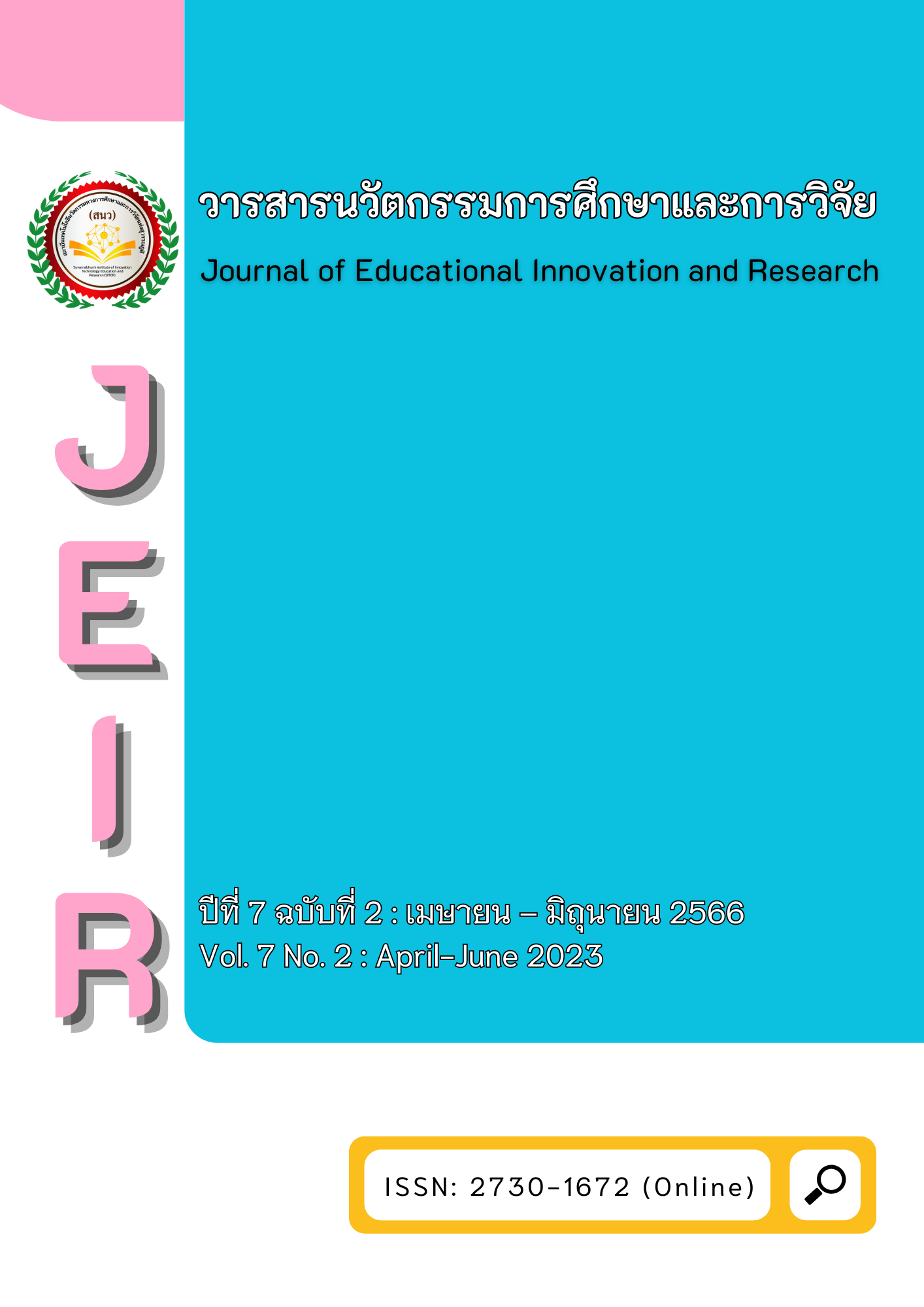How Do Top Management Team Characteristics Affect the Firm Innovation in China Growth Enterprise Market? The Moderating Role of Managerial Incentives
Main Article Content
บทคัดย่อ
This article aimed to study how the top management team (TMT) demographic characteristics affect the innovation of firms in China Growth Enterprise Market. Besides, the paper tended to find out what the role of managerial incentive scheme plays in the relationship between the TMT characteristics and the innovation. The samples were the listed firms in China Growth Enterprise Market. The TMT characteristics of sample firms were obtained from the CSMAR database and the annual reports. Analysis data by Descriptive statistics and Content Analysis. The research results were found as follows; 1. Take age, gender, professional background, educational level and team size as proxy variables to measure the characteristics of TMT. It found out that the age and the proportion of female managers are negatively with the Research and Development (R&D) investment. The professional background, the educational level and the team size affect the R&D investment positively. This influence remains even after controlling for the impact of enterprise scale and performance. 2. The presence of managerial incentive schemes (salary incentive and stock option incentive) increases corporate innovation effort, and the impact of salary incentive is significant; whereas, the stock option incentive is not. 3. The moderating influence of salary incentive and stock option incentive on the relationship between TMT characteristics and R&D investment behavior has been tested. The results showed that the salary incentive strengthens the effect of the TMT characteristics on the R&D investment. However, the stock option incentive does not.
Article Details

อนุญาตภายใต้เงื่อนไข Creative Commons Attribution-NonCommercial-NoDerivatives 4.0 International License.
เอกสารอ้างอิง
Bantel, K.A. and Jackson, S.E. (1989). Top management and innovations in banking: Does the composition of the top team make a difference?. Strategic Management Journal, 10(1), 107-124.
Behrend, O. and Strom, R.O. (2007). Aligned, Informed, and Decisive: Characteristics of Value-Creating Boards. Social Science Electronic Publishing, (5),1-30.
Cannella, A.A., Park, J.J. and Lee,H.(2008). Top Management Team Functional Background Diversity and Firm Performance: Examining The Roles of Team Member Colocation and Environmental Uncertainty. Academy of Management Journal, 51(4), 768-784.
Certo, S.T. et al. (2006). Top Management Teams, Strategy and Financial Performance: A Meta-Analytic Examination. Journal of Management Studies, 43(4), 813-839.
Colombelli, A. (2015). Top Management Team Characteristics and Firm Growth: Evidence from a Sample of Listed Companies. International Journal of Entrepreneurial Behavior & Research, 21, 107-127.
Daellenbach, U.S., McCarthy, A. M. and Schoenecker, T.S.(1999). Commitment to innovation: the impact of top management team characteristics. R&D Management, 29(3), 199-208.
Grimm,C.M. and Smith,K.G. (1991). Research notes and communications management and organizational change: A note on the railroad industry, Strategic Management Journal, 12(7), 557-562.
Haleblian, J. and Finkelstein, S. (2017). Top Management Team Size, CEO Dominance, and firm Performance: The Moderating Roles of Environmental Turbulence and Discretion, Academy of Management Journal, 36(4), 844-863.
Hambrick, D.C. and Mason, P.(1984). Upper echelons: The organization as areflection of its top managers. Academy of Management Journal, 9(2), 193-206.
Hambrick,D.C.,Cho,T.S.,&Chen,M.J. (1996). The influence of top management team on firms' competitive moves. Administrative Science Quarterly, 41, 659−684.
Hitt, M.A. and Tyler, B.B.(1991). Strategic decision models: Integrating different perspectives. Strategic Management Journal, 12(5), 327-351.
Jesen, M. C. and Meckling, W. H. (1976). Theory of the firm: Managerial behavior, agency costs and ownership structure. Journal of Finance and Economics, 3(4), 305-360.
Lei, H. and Liu, P. (2013). The Impact of characteristics of senior management Team on technological Innovation in SMEs. Journal of Zhongnan University of Economics and Law, (4), 96-115.
Liu, Y. G. and Liu, W.(2007). Executive tenure and R&D expenditure in China's listed companies. Management World, 1, 128-136.
Pegels, C.C., Song, Y.I. and Young, B.(2000). Management Heterogeneity, Competitive Interaction Groups, and Firm Performance. Strategic Management Journal, 29(9), 911-923.
Tao, B. S. and Xu, J. (2012). The relationship between the characteristics of top management team and corporate performance: Empirical evidence based on SMEs board listed companies, Accounting, (7), 106-108.
Tihanyi, L. et al.(2000). Composition of the Top Management team and Firm International Diversification. Journal of Management, 26(6), 1157–1177.
Wiersema, M.F. and Bantel, K.A.(1992). Top Management Team Demography and Corporate Strategic Change. Academy of Management Journal, 35(1), 91-121.


